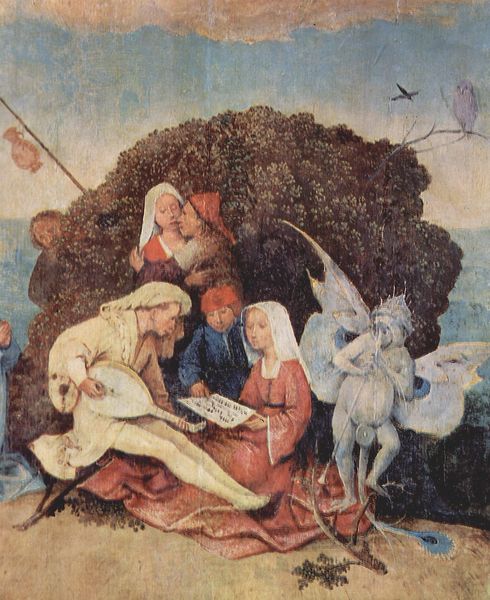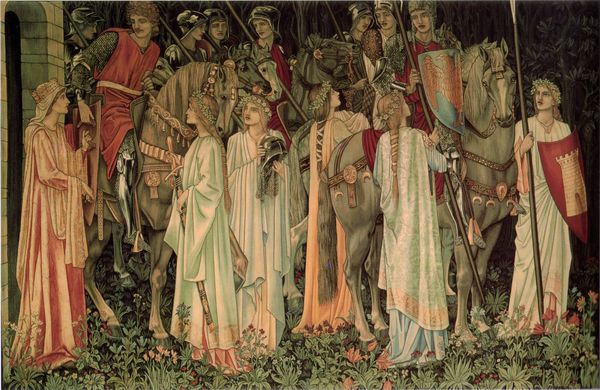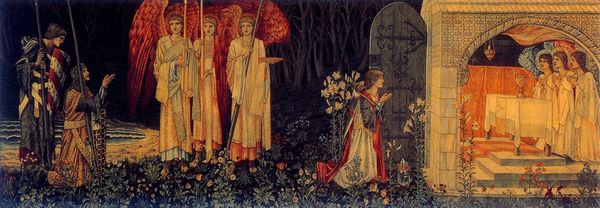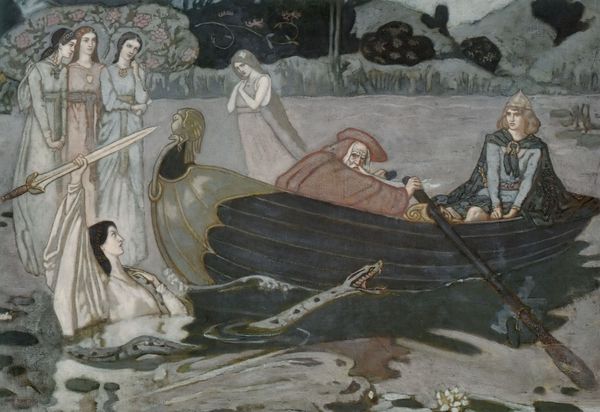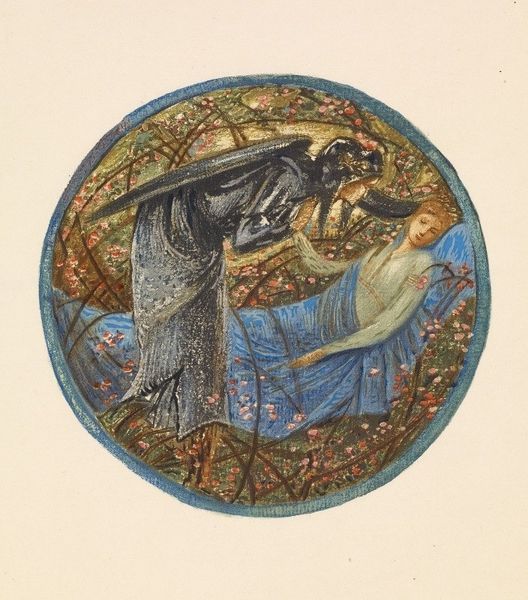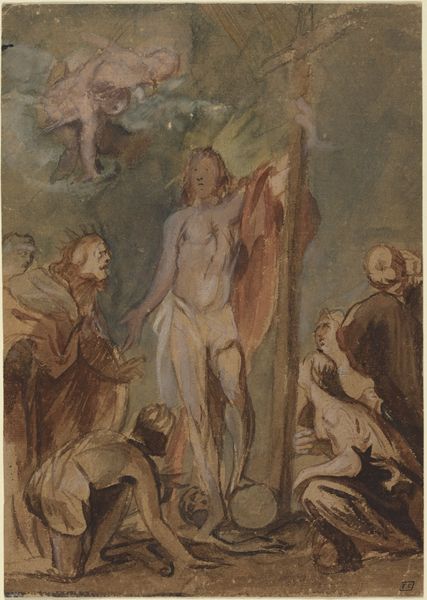
Copyright: Public Domain: Artvee
Curator: "The Passing of Venus" by Edward Burne-Jones, dating to 1898. It is a watercolour that offers us a layered composition of narrative and figurative elements. Editor: It feels melancholy. The figures have this dreamy, detached quality and the color palette reinforces that wistful, almost sorrowful atmosphere. It feels very… Romantic, capital R. Curator: Absolutely. Notice how the artist uses line to create a sense of movement— the way the drapery falls, the curves of the chariot, even the implied arc of Cupid’s bow. These are classic elements from Romanticism that infuse the painting with its energy and drama. The composition also has a deliberate structure using implied horizontal bands that organize the visual plane and the different stages of this passing. Editor: And yet it’s so much more than a simple aesthetic exercise, isn't it? Venus, a potent symbol of feminine beauty, fertility, and love is seen leaving this earthly space. It reflects the societal shifts of the Victorian era and anxieties around femininity and female power. The figures, the muted tones—it’s a symbolic statement about change and loss. Venus is escorted from her former position of reverence to a nebulous future, a shift that perhaps parallels how late Victorian society viewed traditional roles of women. Curator: Indeed, you are right to address those anxieties. It also prompts one to think about Pre-Raphaelite conventions. Here, the idealized, almost ethereal, portrayal of women takes centre stage and is typical of that movement. In Burne-Jones' artistic interpretation, it becomes more about the idea of Venus. What do we glean about the artist’s vision through form? Editor: Form and subject blend so beautifully, inviting consideration of not only the story depicted, but of its impact on shaping identity within a tumultuous time. The melancholic depiction evokes empathy for figures in transition. The work reminds us to look critically at historical constructions and the ways societal shifts mold not only artwork, but also gender. Curator: Thank you. The convergence of technical elements and your insights truly allows viewers to grasp the depth within this work. Editor: It has been a thought-provoking exploration. I hope it encourages more contemporary conversations with historical artwork.
Comments
No comments
Be the first to comment and join the conversation on the ultimate creative platform.
